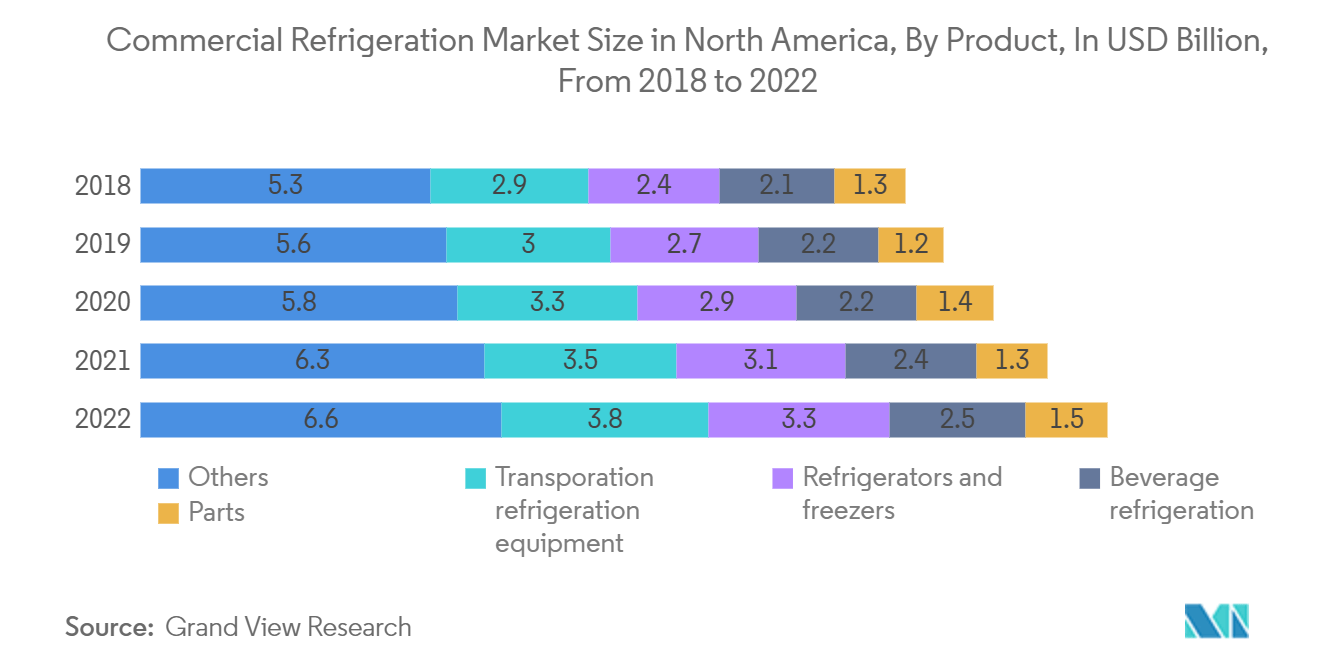Market Trends of Cold Storage Industry
Rapid Growth in Import and Export Activities of Food Items and Pharmaceutical
Cold storage facilities are witnessing rapid growth in demand owing to the increasing import and export activities. The cold storage market is booming with increasing global trade and the corresponding need for secure storage infrastructure.
India accounts for 5.92% of the worldwide pharmaceutical and medicine market. Formulations and biologics accounted for most of India's exports (73.31%), followed by drug intermediates and bulk medicines. In 2021-22, the country exported pharmaceutical items worth USD 24.62 billion, a 2% increase over the previous year. Exports increased by 18% yearly to USD 24.4 billion in 2020-21.
In March 2022, India exported USD 2.4 billion worth of drugs and pharmaceuticals, a 23% increase from USD 1.97 billion in February 2022. The USA, UK, South Africa, Russia, and Nigeria are India's top five export destinations.
In December 2022, China's pharmaceutical product exports totalled USD 990 million, while imports totaled USD 3.29 billion, resulting in a USD 2.3 billion negative trade deficit. From December 2021 and December 2022, China's pharmaceutical exports fell by USD -3.04B (-75.4%) from USD 4.03B to USD 990M, while imports fell by USD -423M (-11.4%) from USD 3.71B to USD 3.29B.

Renewable Refrigeration Technologies to Open New Market Opportunities
Cooling is the fastest-growing energy use, but it is also one of the most crucial energy debate blind spots today. Rising cooling demand is putting a strain on electrical infrastructure and pushing up emissions in several countries. The European Commission's Heating and Cooling Strategy mentions measures such as "raising the percentage of renewables" and "reuse of energy waste from industry" as two essential areas for decarbonizing cooling to meet the EU's climate objectives by 2050. As a result, new technology development and adoption are critical to meet end users' needs promptly by flexibly 'absorbing' renewable energy and/or waste heat and then 'converting into' and storing cooling energy.
Solar-powered cold storage systems reduce post-harvest loss by roughly 80% and increase the shelf life of perishable foods from two to 21 days.
There are also cooling systems that use natural refrigerants like ammonia (NH3) or carbon dioxide (CO2) to collect heat from the field and start the cold chain process. Load monitoring in real time also enables the collection of data on location, temperature, humidity, and other variables such as CO2 levels or door opening to improve control.
Increasing the capacity to monitor and control the cold chain allows for timely corrective actions to be taken when a critical variable departs from the ranges established for quality control, providing the opportunity to avoid or reduce losses, while registration itself, the log of conditions throughout the chain, allows the parties involved to validate that the products were kept in the required conditions.
Intelligent systems based on the 5G (ubiquitous) Internet of Things are an emerging technology in the design of cold chain logistics. With its technological benefits, the Internet of Things is infiltrating the logistics area and replacing the original industrial shape. This provides a solid foundation for wholesalers and retailers to make logistical decisions, and it has significant application value for increasing the logistics efficiency of the whole cold chain.


